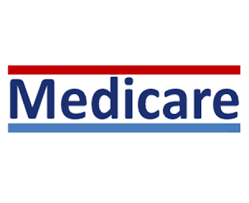
Our debt just hit light speed !
Think we will hit anything?
Shall we borrow more to invest in the stock market ?
Investors often ask me if they should take out a loan, borrow a second mortgage or cash out an annuity or life insurance policy to invest in the stock market.
Since many advisors get paid on money under management and might encourage such a thing, I am of the opinion suggesting new borrowing to invest is unscrupulous behavior on the part of an advisor, with very few exceptions.
Since no one can forecast with any certainty market behavior, having the client take out new loans or cash out an annuity or life policy to invest in stocks may be exposing them to undue risks.
As for the annuity or life policy, one would have to look at the terms and conditions of the contracts. Perhaps in certain cases, cashing out an annuity or life policy might be prudent based on the contract terms, but doing so to put it in the market may not be in the client’s best interest and it could be said, is instead, in the interest of the advisor. That is because money coming from that liquidation, if put under management with the advisor, might boost the income to that advisor.
As sworn fiduciaries to steward client monies only in the best interest of the client, when I hear about such behavior, I take note of what advisor did it, and catalog that information for future reference. Quite simply, suggesting that a client go in debt to plow it into the market is, in my stern opinion, very bad advice.
The reason for this is that markets can indeed go up, making the debt a generator of profits over and above the original amount of the loan and its interest payments. But markets can also go down. And these ups and downs of the market can go a lot farther and last a lot longer than expected.
Imagine taking out a $100K loan, and investing it, and then the market falls hard and for an extended period of time, such as what we are witnessing now.
Since the legal disclaimer of investing includes the statement “you can lose money, including total loss of principal”, one has to consider the possibility he or she won’t make money, break even, or possibly even lose some or all of it, and subsequently be on the hook to pay back money they no longer have.
Not a pleasant thought.
There are probably some advisors and investors that would argue this thesis, and have encouraged such actions from their clients. I am of the opinion that one should run far and fast from the very suggestion of borrowing to invest and the person or firm who suggested it.
An arguable variation of this would be to decide whether to pay off a mortgage or instead stick it in the market. For reasons I can’t explain, my brain doesn’t so violent regurgitate this idea but I suppose it should. Guess I do have my biases.
I would have to think long and hard about the mortgage question, see what interest rate the client is paying on the mortgage, the term of the mortgage and the financial situation and risk tolerance of the investor and then move forward from there.
Having said all that, there is a situation, at least right now, that I might toss out my recommendation of nixing any loans, and suggesting investors take a look at the U.S. government I-BOND, of which I have written about a few times here in Money Matters.
Link: (https://www.theunion.com/news/business/marc-cuniberti-a-gift-from-the-us-government/)
With 100% principal guarantee and paying 9.6% APR at this moment in time, investors might consider looking at an I-BOND, comparing what it might pay against the borrowing costs to fund it.
In the terms of the I-Bond, interest rates paid can change, an early withdrawal penalty may apply, and there are a some restrictions, all of which should be well known before considering. I suggest using the link above to my previous article to review a brief summary of the I-BOND, then going a step farther and pay a visit Treasurydirect.gov for all the not-so-gory details.
That said, the restrictions versus the opportunities presented by the purchase of the I-BOND along with the government guarantee of principal may make it one of the very few instances where a debt encumbrance to finance an investment might be worth considering.
“Watching the markets so you don’t have to”
This article expresses the opinion of Marc Cuniberti and is not meant as investment advice, or a recommendation to buy or sell any securities, nor represents the opinion of any bank, investment firm or RIA, nor this media outlet, its staff, members or underwriters. Mr. Cuniberti holds a B.A. in Economics with honors, 1979, SDSU, and California Insurance License #0L34249. His website is moneymanagementradio.com, and was recently voted Best Financial Advisor in Nevada County. 530-559-1214
Turning 65?
Sign up for Medicare
(530)559-1214
Call me



